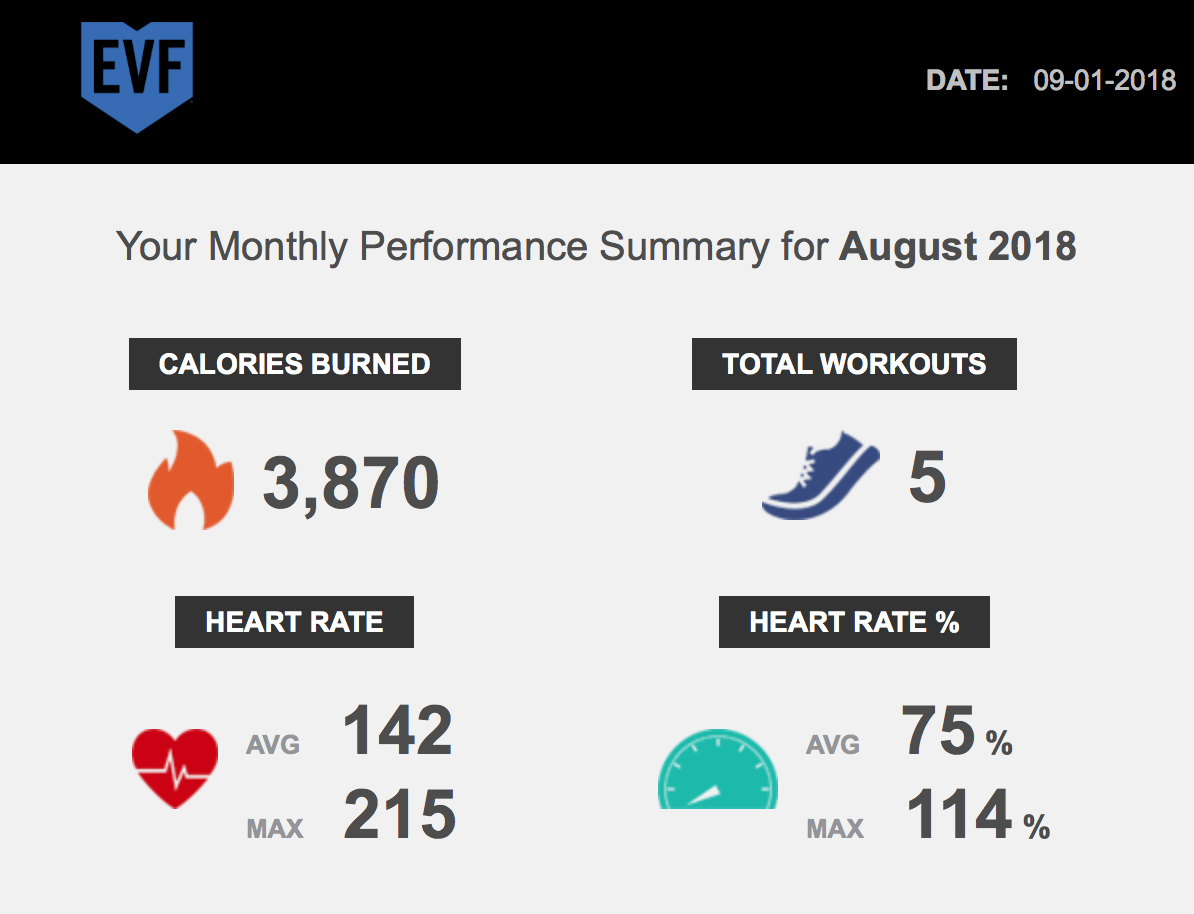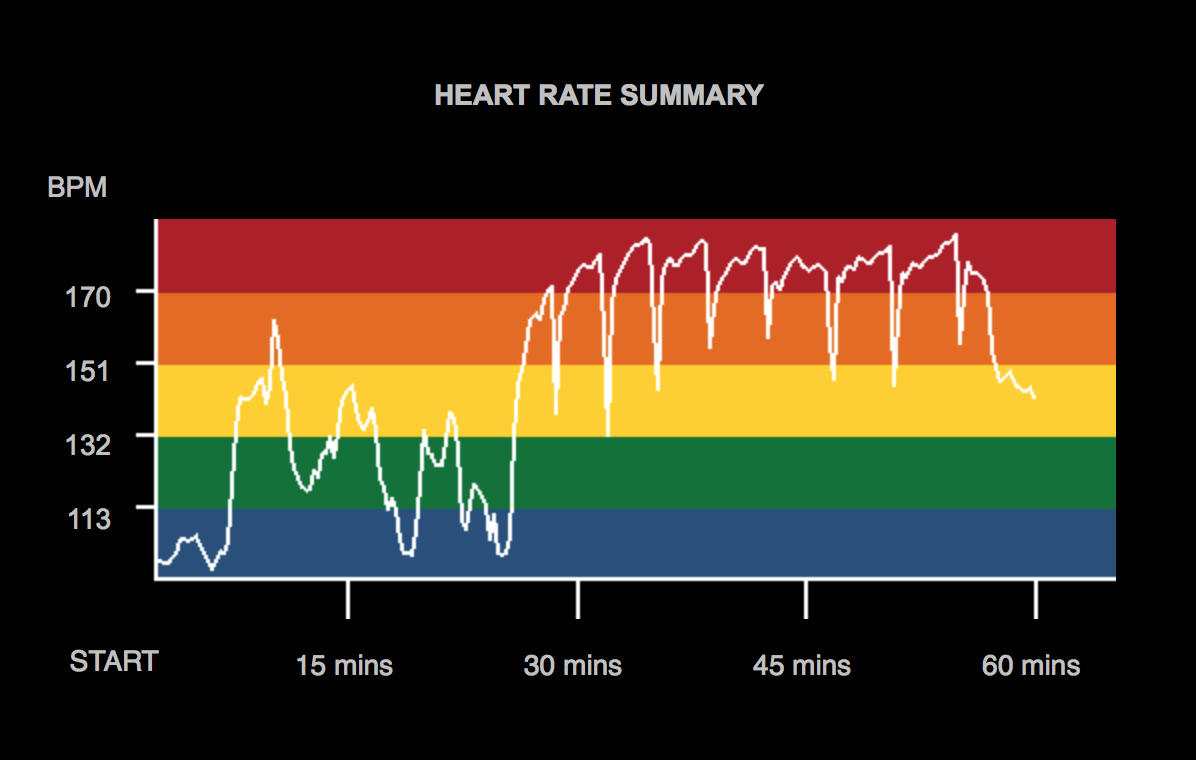Introducing Heart Rate Training
We’re excited to announce a new partnership: EVF Performance Columbus Circle and Performance IQ (PIQ) are teaming up to bring performance tracking technology to every EVF class starting Monday, Sept. 17.
What does that mean for you? In a nutshell: a data-driven look into how hard you’re working in class. PIQ tracks your heart rate and sends you a personalized post-workout summary of your class performance.
Live feedback allows you to see and adjust your intensity level DURING class to meet recommendations from your coach. Different workouts demand different intensities and this technology can make monitoring that much easier! After class, you’ll get a post-workout summary email that allows you to see the by-the-minute breakdown of your workout so you can make adjustments for next time.
So, ready to start tracking? All you need to do is purchase our heart rate monitor at the front desk or bring your own ANT+ compatible heart rate monitor. Once you create a PIQ account with the front desk, you’re ready to start tracking your average and maximum heart rate during class, average calories burned and time spent in each heart rate zone.
Why is heart rate important during training? What does it show me?
Cardiorespiratory endurance, which we refer to as endurance training, relies on frequency, intensity and duration to be effective. You already know how long (duration) and how often (frequency) you exercise, but do you know how intensely you’re actually training? That’s where knowing your heart rate can help you get the most out of every workout.
Anyone who’s focused on endurance training (have you ever taken on a long run, bike or row?) may be familiar with heart rate zones. Let’s take a look at each zone, how it’ll show up on your post-class report and how you can use zones to make the most out of every workout here at EVF.
Zone 1: “Blue Zone” or Resting/Recovery Zone
This zone represents a resting heart rate or very low exercise intensity to increase blood flow and promote recovery. You’ll likely only see this in your class report before and/or after your workout session.
Zone 2: “Green Zone” or Warm-up/Active Recovery Zone
This zone is associated with warming up for a workout. You’ll target this zone to prepare for higher-intensity exercise and between intense interval sets to know your body is ready to work again. You’ll see this on your report during the warm-up and cool-down portions of class, as well as between strength training sets and some high-intensity interval training.
Zone 3: “Yellow Zone” or Oxidative/Endurance Zone
This zone is all about continuous, lower-strain activity. You’ll be able to sustain longer duration efforts here. Think continuous moving for 15 to 20 minute AMRAPs or longer and slower runs/rows/bikes. Your heart rate may drop to this zone between certain interval training sessions when you’re ready for another round.
Zone 4: “Orange Zone” or Glycolytic/Middle-distance Zone
We’re starting to turn up the intensity! This zone is often associated with workouts lasting between 6 and 12 minutes — AMRAPs, for time workouts or chippers. It may become difficult to sustain higher-intensity effort without short periods of rest. You’ll see this zone on your summary during the workout of the day (WOD) in CrossFit and during any high-intensity interval training workouts.
Zone 5: “Red Zone” or Phosphagen/Sprint Zone
Here’s where things get serious. This zone encompasses sprints, high-intensity efforts between 10 seconds and 2 minutes, and is the highest range of our heart rate capacity — meaning it’s not a sustainable training zone for our bodies. You’ll see this zone during intense exercise (i.e. 100 to 200m sprints, heavier weightlifting, or during interval training) often as a “spike” in your heart rate summary.
One thing to keep in mind: Spending too much time in any one zone won’t make for a well-rounded athlete. The best athletes are those who are proficient and developed in all zones of training and use these zones as tools to improve other areas.
At EVF, we believe in strength AND conditioning. We base our class programs around the notion that whole-body strengthening and conditioning makes you more capable and improves your quality of life — whether that’s snatching your bodyweight, picking up your kids, putting your arms overhead, going on a hiking trip, or just making everyday life easier as a stronger and healthier human being.
Ready to jump into the data? Talk to the front desk!
PIQ coming soon to CrossFit Upper East Side!
2018 09 12


